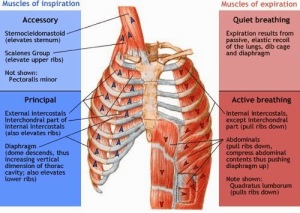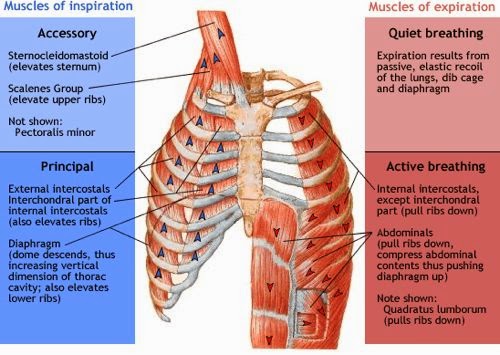There are two main groups of inspiratory muscles: principal and accessory. Principal muscles are used regardless of the level of breathing required, while accessory muscles are only used during forced breathing-when someone has asthma, exercises or has a cold.
 |
| soundersleep.com |
The principal (primary) muscles are: the external intercostal, internal intercostal and the diaphragm muscle. Both the external intercostal muscles and the internal intercostal elevate the ribs, thus increasing the width of the thoracic cavity, while the diaphragm contracts to increase the vertical dimensions of the thoracic cavity, and also aids in the elevation of the lower ribs.
The accessory (secondary) muscles of inspiration are: the scalene and sternocleidomastoid muscles. During inspiration, the external intercostals raise the lower ribs up and out. The sternocleidomastoid and scalene muscles also become involved, serving to raise and push out the upper ribs and the sternum.
During expiration, the most important muscles are those of the abdominal wall (including the rectus abdominus, internal and external obliques, and transversus abdominus), which drive intra-abdominal pressure up when they contract, and thus push up the diaphragm. The internal intercostals assist with expiration by pulling the ribs down and in.


